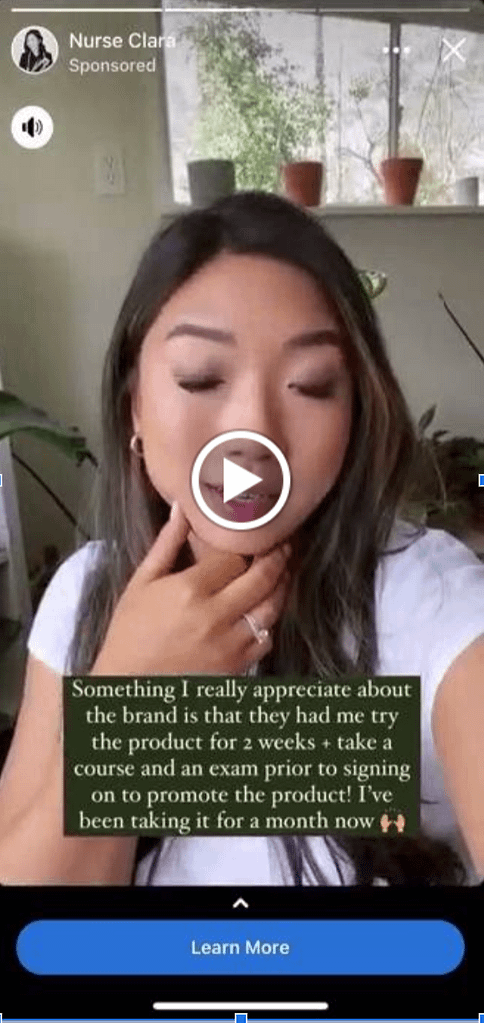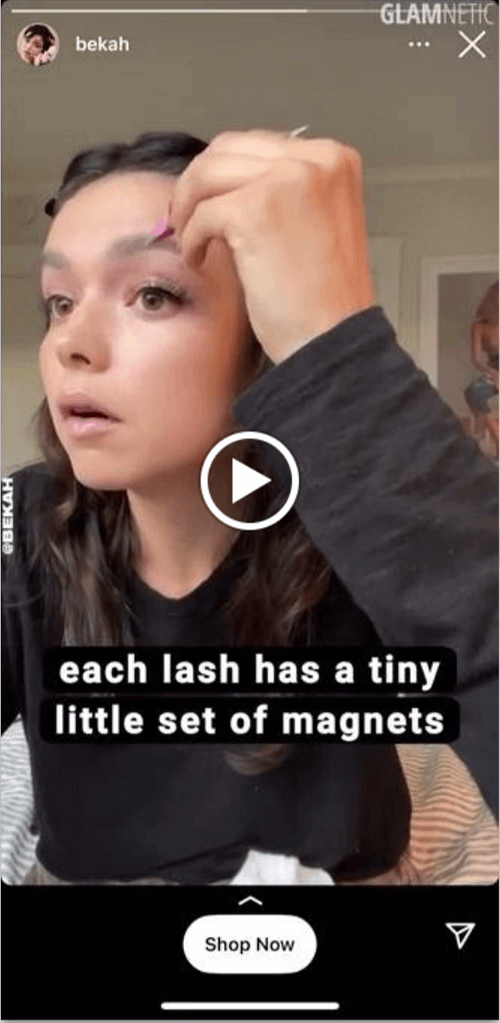Whitelisted: How to Supercharge Your Influencer Marketing
Influencer marketing, though more popular than ever, is hardly a new phenomenon. True to their name, influencers have been “ influencing” the purchasing decisions of consumers since as far back as the early 18th century (minus the iPhone selfies, of course).
Today nine in 10 marketers report they are running or planning to run an influencer marketing campaign in the near future. What’s more, the influencer marketing industry is estimated to grow to nearly $14 billion by the end of 2021.
The reasons for the explosive boom include everything from better ROI to stronger SEO, but quite simply, influencer marketing is more appealing than traditional ads to today’s consumer. Shoppers have grown to trust and even revere the always-in-the-know influencer over the script-reading staged actors in traditional ads.
Case in point: 46.2% of shoppers between the ages of 16 and 24 years old admit to using ad blockers. Clearly, the more influencer marketing evolves, the less compelling traditional ads become.
Thanks to the strong performance and growing popularity of such marketing, Facebook and Instagram have made it easier and more rewarding than ever for brands and content creators alike to form winning partnerships with easy-to-use tools. Of note, influencer whitelisting has proven to be a wild success for brands since bursting onto the scene in 2014.
Here we break down how to supercharge your whitelisting strategy to so much as triple your brand’s click rates on influencer ads.
What Is Influencer Whitelisting
Influencer whitelisting is when influencers grant advertiser access to their Facebook Business Page and Instagram, allowing brand partners to optimize paid media behind the influencer’s content. It’s when an ad is being run through the influencer’s account, instead of your own branded page. Keep in mind, influencer whitelisting is very different from a boosted post. The influencer doesn’t need to share content on their feed in order for the advertiser to put some spend behind it. Another important factor to consider: influencers who you partner with don’t have to be macro. They can have as few as 100 followers and still be able to create a successful whitelisting strategy when executed correctly, which we’ll cover throughout this post.
Below is the difference between a traditional ad and a whitelisted one:


The highly produced content on the left is an ad coming from the brand’s page. The one on the right is promoting the same advertiser, however, the content is very different in look, feel, and messaging, and it is being distributed through the influencer’s page, not under the brand’s handle. It’s important to note the influencer didn’t actually post this piece of content—it’s being run as an ad using the influencer’s handle.
Influencer Whitelisting’s Creative Media Buying Strategies
Whitelisted ads allow you to unlock a few key strategies when you’re thinking about creative media buying. These include partnering with popular media outlets, as well as other brands.
Partnering with Media Outlets
Collaborating with media outlets allows your brand to grow credibility when you partner with larger media outlets like Buzzfeed, The Quality Edit, and even Business Insider. Any one of these media outlets are a very strategic partner for whitelisting purposes as they have enormous reach and cachet.
Partnering With Other Brands
With whitelisted content, you’re also able to partner with other brands and access their account for different giveaways and product collaborations. Again, it’s a very smart way to access additional accounts and expand your reach to new audiences, while having you as a brand dictate the media buying behind it.
How to Source Influencers for Whitelisting
Now that we know what influencer whitelisting is and the media-buying benefits, let’s dive into how to get started. The first task at hand before negotiating and starting talks about a whitelisting strategy is to cultivate a relationship—whether it’s with a media outlet, other brands, or content creator(s).
First, you need to have an alliance with the influencer(s) before going ahead and asking for whitelisting permissions. There are a number of ways to find the appropriate influencers for your brand, negotiate with them, and develop your whitelisting strategy. Below are a few methods.
- Tagged Posts: The easiest way to find influencers is to comb through your tagged posts on Instagram and see which content you connect with. From there, you can find their email addresses (if provided) or you can send them a DM. That’s the best place to find influencers or content creators who are already engaged with your brand.
- Cold Outreach: You can also do cold outreach, scrolling through Instagram and other platforms and introducing yourself as a brand, potentially offering free products and starting a conversation so you’re able to introduce influencer whitelisting.
- There are other turnkey platforms that make the process more seamless, for example:
- Hashtag Paid, which has a network of influencers already on their platform who are ready to whitelist. While more expensive, it can execute the strategy a lot faster.
- Carro is a Shopify app that allows you to see who your influential customers are and you’re also able to discover influencers through your email subscribers and whoever follows your social accounts.
- GRIN is a platform that grants you access to 35 million influencers, including their emails, and they also have a “discovery” page to help you source influencers who have previously tagged you.
How to Whitelist an Account
Once you have the right influencer on board, you’ll need to instruct them on how to create a Business page on Facebook through the Facebook Business Manager. After creating this Business page, they will need to connect their Instagram so you’re able to distribute whitelisted ads on both social platforms.
The final step is to have the influencer grant you brand partner access. To do this, you’ll need to know and share your business ID with the content creator.
Influencer Strategy and Benefits
So, why would an influencer agree to work with you and why would you as a brand agree to work with an influencer? There are plenty of reasons and it’s truly a win-win situation for both parties.
Benefits for the Influencer
When you’re working with a micro influencer or a nano creator, influencer whitelisting will give them exposure to more accounts because the ad can be viewed by many different audiences, especially if there’s spend behind it. So, you’re growing their followers in an organic way and improving their engagement rate, which is a huge victory for influencers competing for visibility, increased followers, and brand associations to land them their next deal.
Another benefit to the influencer is payment, which is part of your negotiation strategy. You can either pay upfront for access to the influencer’s account or pay off of rev share or commission (a good range would be between 5-20%). Another negotiation tactic is to offer more products to the influencer, which is MuteSix’s preferential method. That’s because influencers love receiving free products and it also allows you to get more content from them interacting with products you want to sell.
Benefits for the Brand
In terms of the benefits for the brand, it’s a completely different conversation. For the advertiser, as soon as you have access to the influencer’s Facebook Business page, you’re able to remarket to that influencer’s followers, as well as to their engaged audience.
In addition, whitelisting allows brands to use influencer audience data to get the whitelisted ad in front of their target consumer—not just the influencer’s existing audience—by utilizing tools to customize lookalike audiences.
For higher-priced products or products that require a little more explanation in order to entice shoppers to make a purchase (for example, supplements, food & beverages, etc.), you’re able to use influencer whitelisting within your funnel to offer more education. When it comes from an actual influencer or real person using your product, it adds credibility to your products, which gives you a ton of social proof, thereby increasing the likelihood that a customer will complete the shopping journey.
Finally, you’re able to generate and repurpose quick and cost-effective UGC that’s authentic, relatable, and consistently performs better than studio-shot creative. Brands can leverage it on their websites, social campaigns, emails, print ads, or even in-store displays, so whenever you’re negotiating with an influencer, you want to make sure you have full content rights to repurpose their content both on whitelisted and non-whitelisted ads.
Content Strategy for Whitelisted Ads
There are two different choices when it comes to content: photography or video, and the main goal is to make them look as authentic and effortless as possible so that they do not blend in with traditional advertisements.
Photography
A popular photo strategy is a selfie with a product (photo on the left). You can also do a point-of-view (POV) shot, where an influencer holds up a product, while hiding their face (photo on the right).


In terms of your caption, you want whitelisted ads to be in the first person, which could be in the form of a review or testimonial, so as to make it feel more conversational and authentic, and less sales-y.
Finally, you want to add education, an advertorial, or a link to a blog post (whether it’s a media outlet or an influencer’s blog). This is a great way to educate audiences about your product or brand while keeping costs extremely low.
Video
In terms of video, you want it selfie style, much like your photos. iPhone-shot videos are super effective, low-production solutions that actually help you celebrate the organic nature of the influencer content. The reason for making it organic is you want to disassociate this ad from your normal branded content that you would run as an ad or post on Instagram. Try to include testimonials, especially touting the impressive results of the featured product.


The Success of Influencer Whitelisting
We’ve mentioned that whitelisted ads perform better than traditional ads. To demonstrate this, let’s take a look at some MuteSix brands that leveraged influencers to drive sales.
Beekeeper’s Naturals
The first MuteSix client to look to is Beekeeper’s Naturals, the sellers of clean, natural remedies made from bee by-products. The brand split-test a UGC ad running from their page vs. from a content creator. MuteSix created this page “The French Review guy” and completed a side-by-side comparison of the non-whitelisted ad running from the brand’s page with the whitelisted ad. The latter resulted in a 31% decrease in CPA, 50% increase in add to cart (ATC), and a 35% increase in ROAS. This was the same creative and the same ad, but one was run through an influencer’s page and one was run through the brand’s page.
Nunbelievable
Another success story is the brand Nunbelievable, a newly launched cookie brand with a mission to donate two meals for every box of cookies sold. Being a new brand, they were looking to leverage influencer whitelisting to establish credibility off the bat and drive more conversions. So they worked with an influencer with just over 10k followers and they were able to drive an 11% increase in CTR, 13% increase in ATC, and 6% increase in ROAS. These incredible results were compared to non-whitelisted ads and clearly demonstrate that whitelisting was a successful strategy for a fresh-on-the-scene, relatively unknown brand.
Ready to Whitelist?
If you’re thinking about elevating your influencer marketing campaign and looking for the right strategy to achieve results like Beekeeper’s Naturals and Nunbelievable, reach out to the Influencer Marketing team at MuteSix through our website.